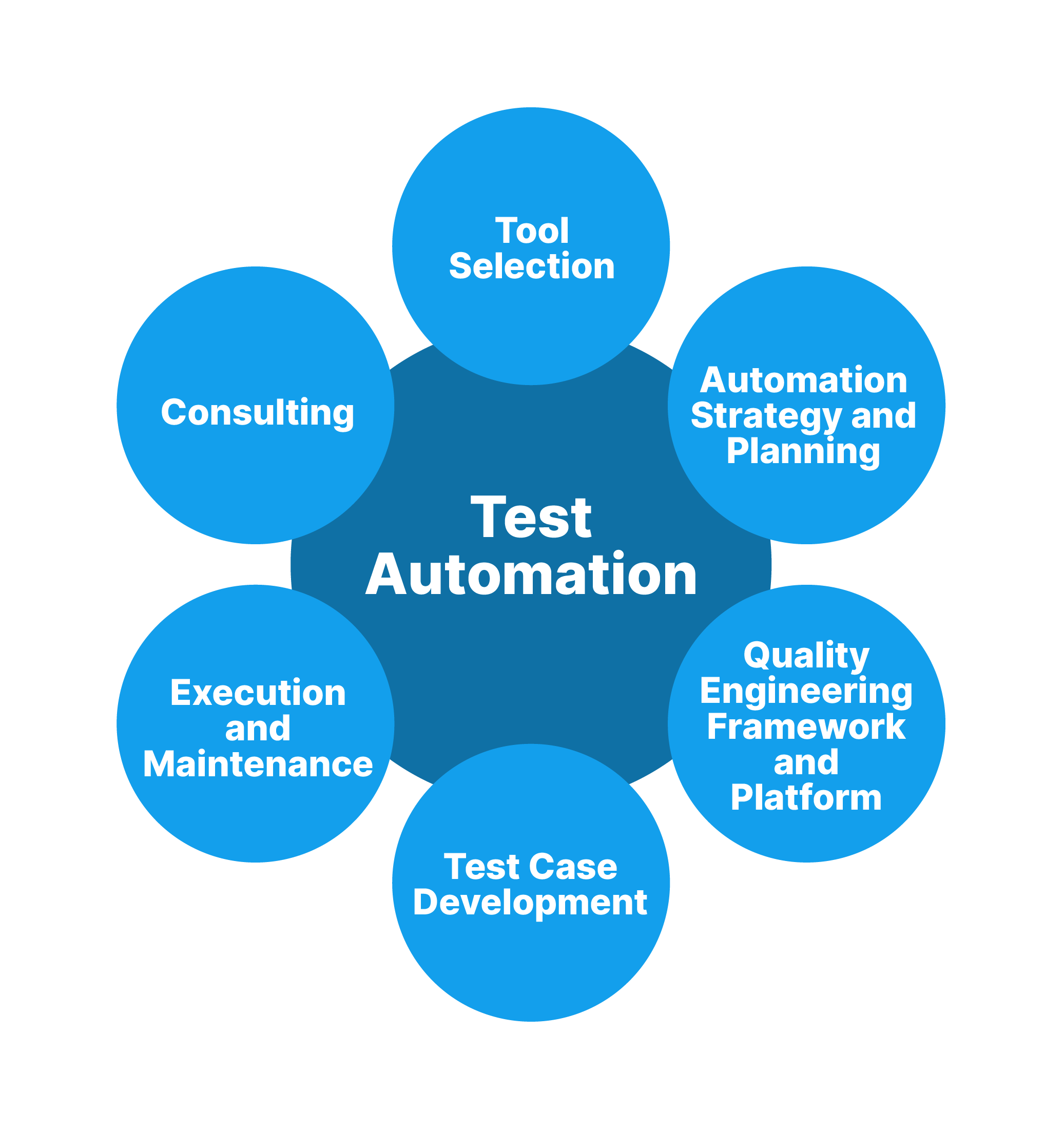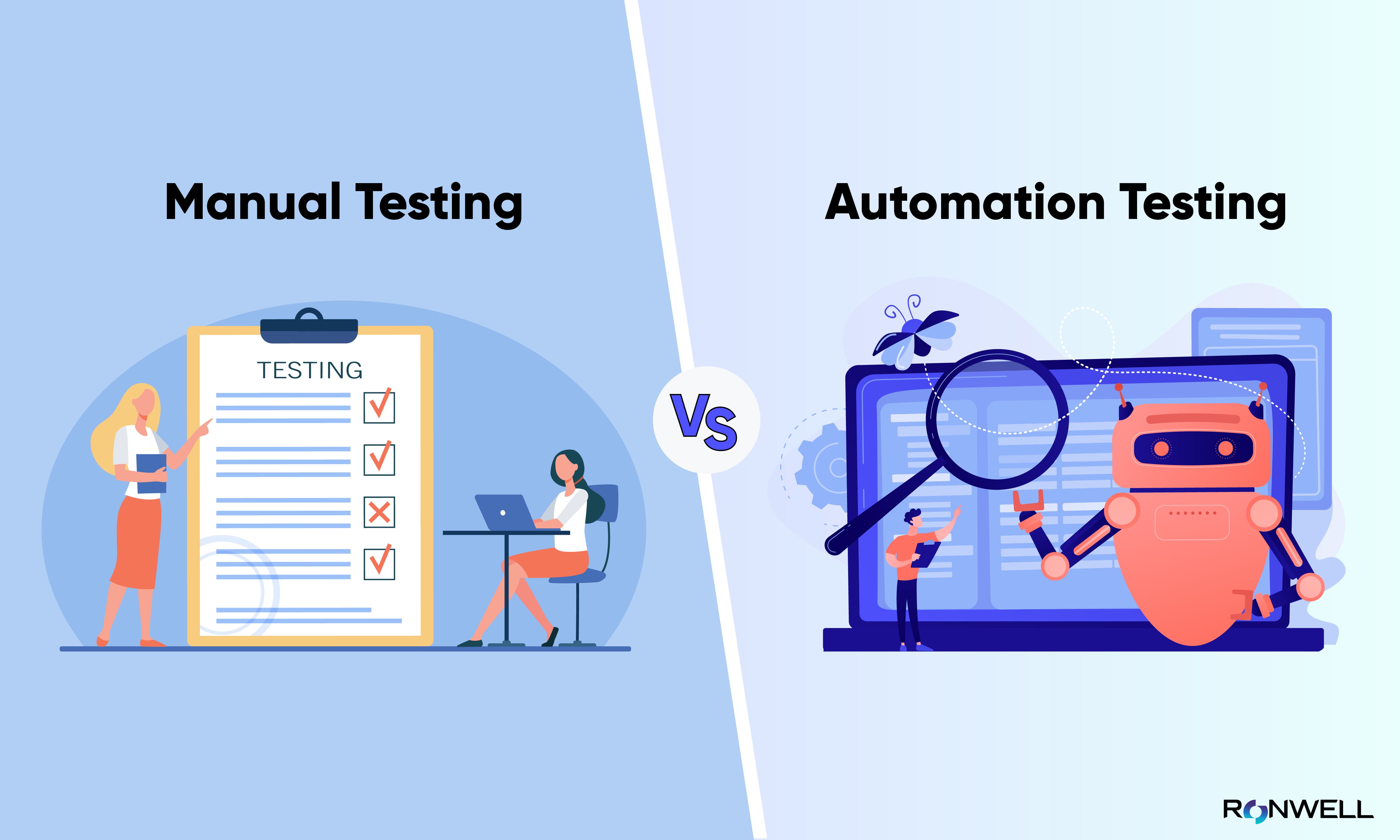Automation Testing Techniques: Finest Practices for Seamless Integration
Automation Testing Techniques: Finest Practices for Seamless Integration
Blog Article
From Handbook to Automated Testing: A Comprehensive Overview to Transitioning Efficiently and Efficiently
In the realm of software screening, the change from guidebook to automated procedures has actually ended up being a progressively crucial shift for organizations seeking to enhance effectiveness and precision in their testing practices. As innovation proceeds to development, the need for smooth and efficient automatic screening techniques has never been a lot more pressing. The journey from manual to automated screening is not without its difficulties, however when approached purposefully and with a clear strategy in mind, the benefits can be significant - automation testing. In this thorough guide, we will discover crucial steps and factors to consider crucial for an effective transition, from the first choice of tools to the assimilation of automation right into existing workflows. Stay tuned to discover the understandings that will assist pave the method for a smoother and a lot more efficient screening process.
Advantages of Automated Evaluating
Automated testing offers countless advantages, improving effectiveness and precision in software program growth procedures. Automated examinations can be run at the same time on several gadgets and running systems, significantly speeding up the testing stage contrasted to hands-on screening.
In addition, automated screening guarantees a greater degree of accuracy in spotting problems. Consistency in screening is likewise enhanced, as automated tests carry out the very same actions specifically each time they are run.
Selecting the Right Devices

To start with, analyze your needs and goals. Understand the scope of your project, the innovations included, and the ability of your team. This analysis will certainly assist you determine the capabilities and features you call for in your screening tools.
Secondly, take into consideration the compatibility of the devices with your existing processes and systems. Smooth combination with your present software development lifecycle is important to make certain a smooth change to automation.
Furthermore, assess the scalability and flexibility of the devices. As your testing needs evolve, the tools should be able to adjust and suit adjustments successfully.
Finally, consider the support and area around the devices. When carrying out automated testing, durable support and an energetic customer neighborhood can provide useful resources and aid. By very carefully thinking about these aspects, you can choose the right tools that straighten with your demands and established the stage for an effective shift to automated screening.
Creating Effective Test Manuscripts

When crafting test manuscripts, it is crucial to think about the particular demands of the software application being tested and guarantee that the scripts resolve all critical capabilities. Detailed and clear calling conventions for test manuscripts and test instances can improve readability and maintainability. Additionally, integrating error handling mechanisms within the examination scripts can assist in recognizing and attending to problems quickly.
Moreover, organizing examination manuscripts into modular parts can improve reusability and scalability, minimizing redundancy and boosting efficiency in test manuscript upkeep. Normal reviews and updates to check manuscripts are crucial to equal progressing software requirements and performances. By adhering to these concepts, testers can develop effective and robust test manuscripts that add dramatically to the success of automated testing processes.
Integrating Automation Into Workflows
By perfectly incorporating automated screening tools like Selenium or Appium right into the software growth lifecycle, teams can attain faster responses on code changes, leading to quicker pest discovery and resolution. This integration enables for continuous testing throughout the growth process, making web sure that any problems are go recognized early on, resulting in higher software program quality. Appropriate assimilation of automation tools needs cooperation between advancement, screening, and operations teams to develop a unified operations that optimizes performance and effectiveness in providing top quality software application products.
Guaranteeing a Smooth Change
Successfully transitioning to automated screening entails precise preparation and mindful execution to lessen disturbances and take full advantage of effectiveness in the software program development process - automation testing. To guarantee a smooth shift, it is vital to start by conducting a complete analysis of the existing screening procedures and identifying areas where automation can bring the most significant benefits. Involving with all stakeholders at an early stage while doing so, consisting of designers, testers, and task supervisors, is critical for gathering assistance and buy-in for the automation effort
Communication is essential during this transition phase. Clear communication of the objectives, advantages, and assumptions of automated testing helps to manage any resistance or concerns that may occur. Furthermore, giving appropriate training and sources for staff member to upskill in automation devices and strategies is crucial for making sure a successful transition.

Conclusion
In conclusion, transitioning from guidebook to automated screening uses numerous benefits, including enhanced effectiveness and integrity. By picking the ideal tools, composing efficient test manuscripts, and incorporating automation flawlessly right into process, organizations can guarantee a successful and smooth shift. It is necessary to welcome automation as a beneficial property in software find more program screening procedures to enhance total top quality and efficiency.
In the world of software program screening, the change from handbook to automated processes has actually become an increasingly crucial change for companies seeking to improve effectiveness and accuracy in their screening methods. Automated tests can be run concurrently on several devices and running systems, drastically speeding up the screening phase compared to hands-on testing. Consistency in testing is likewise boosted, as automated tests perform the same actions exactly each time they are run.To ensure the effective application of selected screening tools, the creation of reliable examination scripts plays a crucial duty in verifying the functionality and efficiency of automated processes - automation testing. By following these concepts, testers can produce durable and efficient test manuscripts that contribute substantially to the success of automated testing processes
Report this page